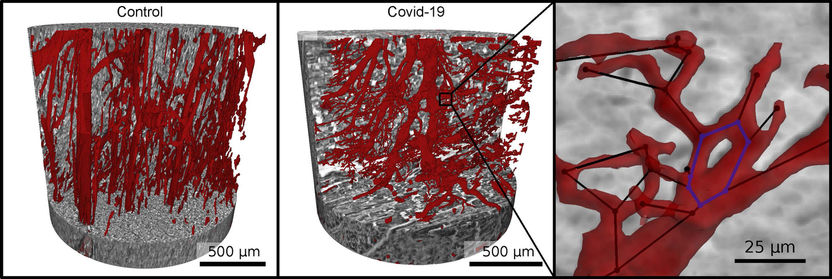Lifestyle-related diseases: clear parallels between humans and bears
Bioinspired approach could offer novel opportunities for the development of medical treatments and drugs for both humans and animals
Advertisement
Formerly bile-farmed bears show the same sort of lifestyle-related pathologies that are also responsible for accelerated, premature ageing in humans. This is the main finding of an international study led by researchers from the University of Veterinary Medicine Vienna. According to the study, bile-farmed bears show clear parallels to a number of diseases in humans caused in both cases by the harmful effects of their respective lifestyles.
For their study, the researchers investigated the long-term effects of chronic inflammation in 42 Asiatic black bears (Ursus thibetanus) rescued from Vietnamese bile farms. The bears were examined under anaesthesia and treated at least twice as part of essential medical interventions. All bears were diagnosed with chronic low-grade sterile or bacterial hepatobiliary inflammation along with other pathologies.
Findings from studies of rescued bile-farmed bears as a model of lifestyle-related diseases in humans
“Chronic inflammation, in conjunction with poor living conditions and chronic stress, appears to increase the risk of developing degenerative diseases such as obese sarcopenia (low muscle mass and strength), chronic kidney disease and impaired cardiovascular function. These disorders are a sign of accelerated ageing. The phenotype (appearance) of bile-farmed bears contrasts markedly with the healthy phenotype of wild hibernating bears,” says first author Szilvia K. Kalogeropoulu from the Research Institute of Wildlife Ecology at Vetmeduni.
The insights gained extend far beyond the animals studied, as last author and project supervisor Johanna Painer-Gigler from the Research Institute of Wildlife Ecology explains: “The pathological parallels with inflammageing and immunosenescence – the gradual decline in immune function – in humans suggests that the insights gained from bile-farmed bears could serve as a model to investigate the pathophysiology and harmful effects of lifestyle-related diseases. This would allow us to look at these pathologies from a broader perspective and hopefully gain a better understanding of them.”
Biomimetics – inspired by nature, of benefit for animals and humans
The researchers identified these similarities using a biomimetic approach, i.e. by drawing inspiration from nature. In the medical context, biomimetic studies of wild animals are useful for identifying mechanisms that protect against the age-related burden of lifestyle diseases or, as shown in this study, to increase susceptibility to them. The bioinspired approach could offer novel opportunities for the development of medical treatments and drugs for both humans and animals. Biomimetics allows researchers to learn from nature, compare different findings between animals and humans, and create knowledge that is not based on animal experiments but on comparative medicine. For the present study, hibernating free-ranging bears, as a healthy control group, served as bioinspiration due to their mechanisms that protect them from the burden of lifestyle diseases that accumulate in humans with age. These include muscle wasting, osteoporosis, vascular disease and chronic kidney disease. Hibernation, as an evolutionary adaptation, has generally made bears more resilient against organ damage and metabolic disorders. Bile-farmed bears, on the other hand, which are kept in suboptimal and unnatural living conditions, do not exhibit the same level of resilience and therefore show similar pathologies as seen in humans living an unhealthy lifestyle.





























































